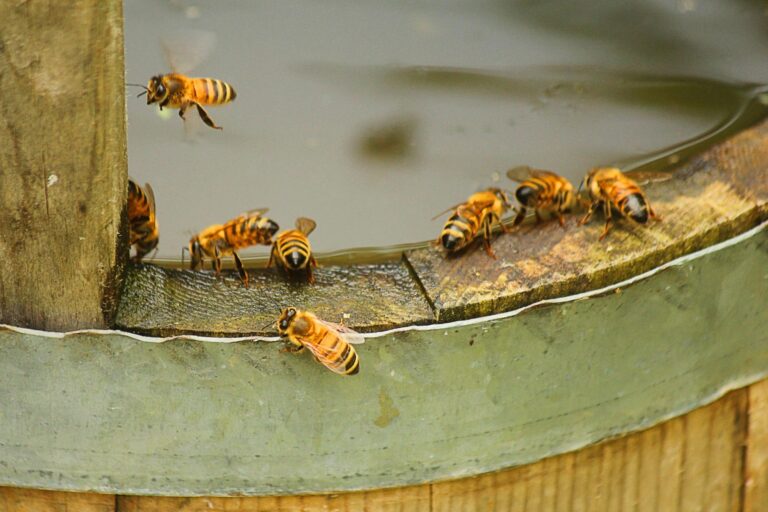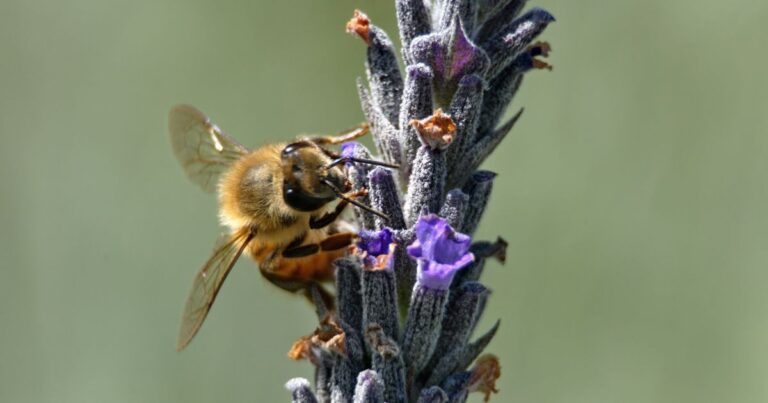The Anatomy of the Honey Bee: Part One
The Anatomy of the Honey Bee: Part One The honey bee might be meagre in size. However, its tiny body is a well-constructed and highly…
The Anatomy of the Honey Bee: Part One
The honey bee might be meagre in size. However, its tiny body is a well-constructed and highly complex powerhouse that has evolved over millions of years. Made to coexist with the natural elements, its body is divided into three distinct sections – the head, thorax and abdomen – and these parts differ between queens, workers and males. This ensures each caste, or bee type, functions perfectly in the smooth-running honey bee chain of life.
Honey bees have an oval-shaped body measuring approximately 15mm in length. Light brown in colour, they have varying degrees of golden yellow to dark brown bands or stripes. Unlike other species who might hide in the face of danger, the honey bee uses its brightly coloured and uniquely marked body to warn off predators or other species trying to steal honey or food. Its vibrancy also serves as a warning, a kind of flashing light, to its potential sting. Finally, this distinctive creature’s exoskeleton is covered with a coarse, fuzzy hair, made to collect pollen and regulate the bee’s temperature.
The head of the bee has many surprising features. Internally, the honey bee has a tiny yet extraordinary brain, with the capacity to process huge amounts of information and make complex decisions. The brain consists of a series of “lobes”. There are also glands inside the honey bee’s head that help produce royal jelly (food for the queen) that are then secreted via the mouth.
From the outside we see two antennae, perched on top of the bee’s head. These function as a sensory centre for the honey bee. Here, the bee can touch, smell, taste and even hear! Each antenna features mechanoreceptors and has a joint midway that can bend. These receptors respond to the movement of air at frequencies associated with sound, allowing the bee to ‘hear’. Odour receptors – 170 in total – give these creatures a well-developed sense of smell, and the right antenna specifically is used to communicate with other bees.
Honey bees have two sets of eyes: compound and simple. The compound eyes are the large, distinct eyes we see on the bee’s face, and each is built with many internal eye-units. These compound eyes take in separate images and send the information to the bee’s brain where it is transferred into a single image. This process also aids in the bee’s ability to use “polarised vision” – the kind of vision humans have when looking through sunglasses on a sunny day. By eradicating glare and useless visual information, the polarised nature of the bee’s vision enables them to navigate, quickly process information, and, like we do, protect their eyes from the harshness of sunlight. They are therefore led more easily to food sources.
In conjunction with these large, more obvious compound eyes, honey bees have three simple eyes that contain just one lens each. However, these eyes are also very special, as they allow the bee to see in UV light. This is especially useful for finding pollen in dark places. The bee can see and sense where to land to collect its food. This combination of compound and simple eyes is the perfect tool to locate and collect pollen and nectar.
The mouth of the honey bee differs between bee-castes; however all have long tongues, or proboscis, that have evolved to ensuring it can reach the nectar at the centre of flowers. The bee also uses its tongue to clean itself and groom the hairs of its mates. Its mandibles, or jaws, are very strong, and consist of the tongue itself and other sophisticated parts that help it collect food and nectar from flowers. The queen has sharp mandibles made for cutting and biting, whereas the workers’ jaws are more smoothed, helping them to produce wax.
Explore the rest of a bee’s anatomy in The Anatomy of the Honey Bee: Part Two.
#beeantaomy #honeybeeanatomy


